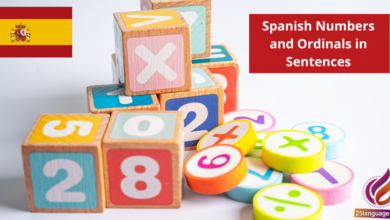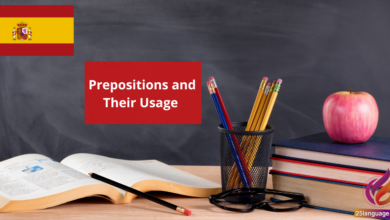Spanish Possessive Adjectives

Imagine expressing your ideas effortlessly in spanish, sharing details about your belongings, family, and experiences! Today, we’re diving into the vibrant world of possessive adjectives: “mi,” “tu,” and “su.” These essential words help you connect with others by indicating ownership and relationships. By mastering these small but powerful adjectives, you’ll enhance your conversational skills and enrich your ability to describe your life in Spanish. Let’s unlock the mysteries of possessive adjectives together!
Understanding Spanish Possessive Adjectives for Everyday Conversations
Possessive adjectives in Spanish indicate ownership and correspond to the English possessive adjectives such as “my,” “your,” “his,” “her,” “its,” “our,” and “their.” They must agree in gender and number with the noun they modify. Here are the spanish possessive adjectives:
- Mi (my)
- Tu (your – informal)
- Su (his, her, its, your – formal)
- Nuestro/a (our – masculine/feminine)
- Vuestro/a (your – plural informal in Spain – masculine/feminine)
- Su (their, your – plural formal)
For example: Mi casa means “my house,” where “casa” is a feminine noun; Nuestros amigos means “our friends,” with “amigos” being masculine and plural. Additionally, using these adjectives correctly in sentences is vital for fluent conversations. For instance, you could say Su libro es interesante, which translates to “His/her book is captivating,” or Vuestra tarea está lista, meaning “Your homework is ready.”
| Spanish Example | English translation | Notes |
|---|---|---|
| Mi coche | My car | Masculine singular |
| Tu hermana | Your sister | Feminine singular |
| Su perro | His/Her dog | Masculine singular |
| Nuestra casa | Our house | Feminine singular |
| Vuestros gatos | Your (plural) cats | Masculine plural |
| Sus padres | Their/your (formal) parents | Masculine plural |
Mastering Mi, Tu, Su: A Comprehensive Guide to Spanish Possessive Adjectives
In Spanish, possessive adjectives are used to indicate ownership and are essential for expressing relationships between people and objects. The three basic possessive adjectives you will learn in this lesson are “mi,” “tu,” and “su,” which correspond to “my,” “your,” and “his/her/its” respectively. These adjectives agree in number (singular or plural) with the noun they modify, but not in gender. For example:
- Mi libro (My book) – Singular
- Mis libros (My books) – Plural
- Tu casa (Your house) – Singular
- Tus casas (Your houses) – Plural
- Su perro (His/Her/Its dog) – Singular
- Sus perros (His/Her/Its dogs) – Plural
When using possessive adjectives, it is vital to remember their placement in a sentence. They typically precede the noun they modify,as shown in the examples above. Additionally, context plays a notable role in determining which possessive adjective to use; “tu” is informal and directed towards someone you know well, while “su” can imply a more formal relationship or refer to someone else’s belongings. Here’s a speedy reference table to further clarify their usage:
| Spanish Example | English Translation |
|---|---|
| Mi madre | My mother |
| Tu hermana | Your sister (informal) |
| Su coche | His/Her/its car |
| Mis amigos | My friends |
| Tus zapatos | Your shoes (informal) |
| Sus libros | His/Her/Its books |
Using Possessive Adjectives in Context: Practical Examples in Spanish
possessive adjectives in Spanish indicate ownership and are an essential aspect of grammar for learners. They agree with the noun they modify in gender (masculine or feminine) and number (singular or plural). Here are the primary possessive adjectives:
- mi (my)
- tu (your, informal)
- su (his/her/your, formal)
- nuestro/a (our)
- vuestro/a (your, plural informal in Spain)
- su (their/your, plural formal)
For example, in the phrase mi libro, which translates to my book, the adjective ‘mi’ agrees with the singular, masculine noun ‘libro’. In contrast, for a plural noun, such as nuestros amigos, we use ‘nuestros’ to reflect both plurality and the masculine noun ‘amigos’, translating to our friends. Here are some additional examples:
| Spanish Example | English Translation |
|---|---|
| tu casa | your house |
| su coche | his/her car |
| nuestra escuela | our school |
| vuestras ideas | your ideas (plural informal) |
| sus libros | their books |
Enhancing Your Spanish Vocabulary with Possessive Adjectives: Tips and tricks
Possessive adjectives are essential components of the Spanish language that express ownership. the basic possessive adjectives in Spanish are mi (my), tu (your – informal), su (his, her, your – formal), nuestro/a (our), and vuestro/a (your – informal plural). The possessive adjectives agree in gender and number with the noun they modify; for instance, use nuestro libro (our book) for a masculine noun and nuestra casa (our house) for a feminine noun. Here are some examples of how these adjectives are used in context:
- Mi gato es negro. (My cat is black.)
- Tu amigo es simpático. (Your friend is nice.)
- Su coche es rápido. (His/Her car is fast.)
- Nuestra profesora enseña bien. (Our teacher teaches well.)
- vuestros libros están en la mesa. (Your books are on the table.)
| Spanish Example | Possessive Adjective | English Translation |
|---|---|---|
| Mi perro juega en el jardín. | mi | My dog plays in the garden. |
| Tu hermana es talentosa. | tu | Your sister is talented. |
| Su familia vive aquí. | su | His/Her family lives here. |
| Nuestra casa tiene jardín. | nuestra | our house has a garden. |
| vuestro perro es adorable. | vuestro | Your dog is adorable. |
To Conclude
¡Excelente trabajo, estudiantes! Hoy hemos recorrido el fascinante mundo de los adjetivos posesivos en español, como “mi”, “tu” y “su”. Ahora ya saben que estos adjetivos son esenciales para expresar pertenencia y relaciones personales en nuestras conversaciones diarias. Recuerden que, a pesar de las diferencias con el inglés, la práctica constante les ayudará a dominar este aspecto del idioma.
Es importante que continúen practicando. Intenten utilizar estos adjetivos en sus diálogos cotidianos o en sus escritos. Pueden describir objetos en su casa usando “mi” o “tu”, o hablar sobre sus familias y amigos con “su”. ¡Cuanto más lo usen, más natural se volverá!
No olviden que cada paso que den en su aprendizaje de español es un paso hacia la fluidez. Sigan explorando y practicando, y verán cómo sus habilidades lingüísticas florecen. ¡Adelante! Este es solo el comienzo de su aventura en el español,y estamos seguros de que lograrán grandes cosas.¡Hasta la próxima lección!





























